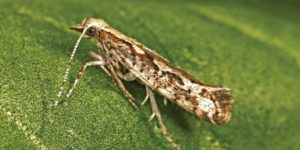Star grass (Cynodon aethiopicus) is a warm climate noxious weed with an extensive system of creeping rhizomes and stolons. It belongs to the poaceae family.
Botany
Rhizomes and stolons are slender tough and scaly normally producing roots at the nodes. Most rhizomes are found in the upper 6cm of the soil but some do extend deeper. The rhizomes can withstand drought and considerable dehydration but not prolonged exposure to the sun.
Stems are woody and more or less erect, thin and some less branched.
The leaf blades are flat and flexible usually about 10cm in length. They have long hairs around the color region particularly on the margin.
Inflorescence are umbel- like with usually 4-8 spike like branches mostly 1. 5-3 inches long.
Ecology
The weed does well in regions with temperature range of 18-27°C. It requires full sunlight for its optimum growth.
Rainfall range of 800-1200mm per annum favors its growth. It normally appears to be drought tolerant therefore can’t withstand waterlogging for prolonged number of days.
It does well in a wide range of soil types ranging from sandy to heavy clay. Best in well drained lighter textured soils. Can grow in soils with PH range of 4.5 to 8.0 but grows well in neutral to slightly alkaline range (6.5-8.5).
Distribution
The weed is native to East Africa (Kenya, Uganda, Ethiopia and Uganda) in altitudes of 800-2000M above sea level mostly along the rift valley. The weed is widespread and mostly naturalized in tropics and subtropical.
Dispersion and propagation
The weed normally propagates through seeds or vegetative. Rhizomes and stolons are dispersed by soil movements. Seeds are normally dispersed by water soil movement, agricultural machinery and other human activities seeds normally germinate when favorable conditions prevail. The seeds can stay dormant for up to 4 years but most usually germinate after 2 years.
Crops mostly affected by star grass
- Maize.
- Baby corn.
- Sugarcane.
Disadvantages of star grass in cropped area
- Reduces crop yield as it competes for nutrients and sunlight.
- Increases cost of production.
- Reduces quality of produce.
- It acts as an alternative host for pests and diseases.
- Checks the flow of water in irrigation channels.
- Reduces soil fertility.
Control
It can be controlled through mechanical, cultural and chemical means.
- Cultural practices such as shading by other plants and mulches helps to suppress growth.
- Mechanical means such as persistent manual removal of rhizomes can help eliminate the weed in small areas.
Greenlife solutions for the control of star grass
At Greenlife we provide chemical means for effective control of Star grass by the use:
- WEMBE 200 SL a non-selective post emergence herbicide, to clear Annual and perennial grasses (Star grass) and broad leaved weeds and any other weed in the field including difficult weeds. Use during Land preparation to clear all weeds.
Rate of use: 3.0Litres per Hectare (300ml in 20L) - CATAPULT 480 SL a non-selective Post emergence herbicide which controls Annual and perennial grasses (Star grass) and broad leaved weeds. Use CATAPULT 480 SL during Land Preparation to clear all weeds.
Rate of Use: 2.0Litres per Hectare (200ml in 20L)
In cropped area it’s recommended to use: - HURRICANE 200 SL a non-selective post emergence herbicide, used to control Annual grasses and broad leaved weeds on Maize, Sweet corn, Baby corn and sugarcane. Apply between rows when crops are above waist high.
Rate of Use: 1.5Litres per Hectare (150ml in 20L)






